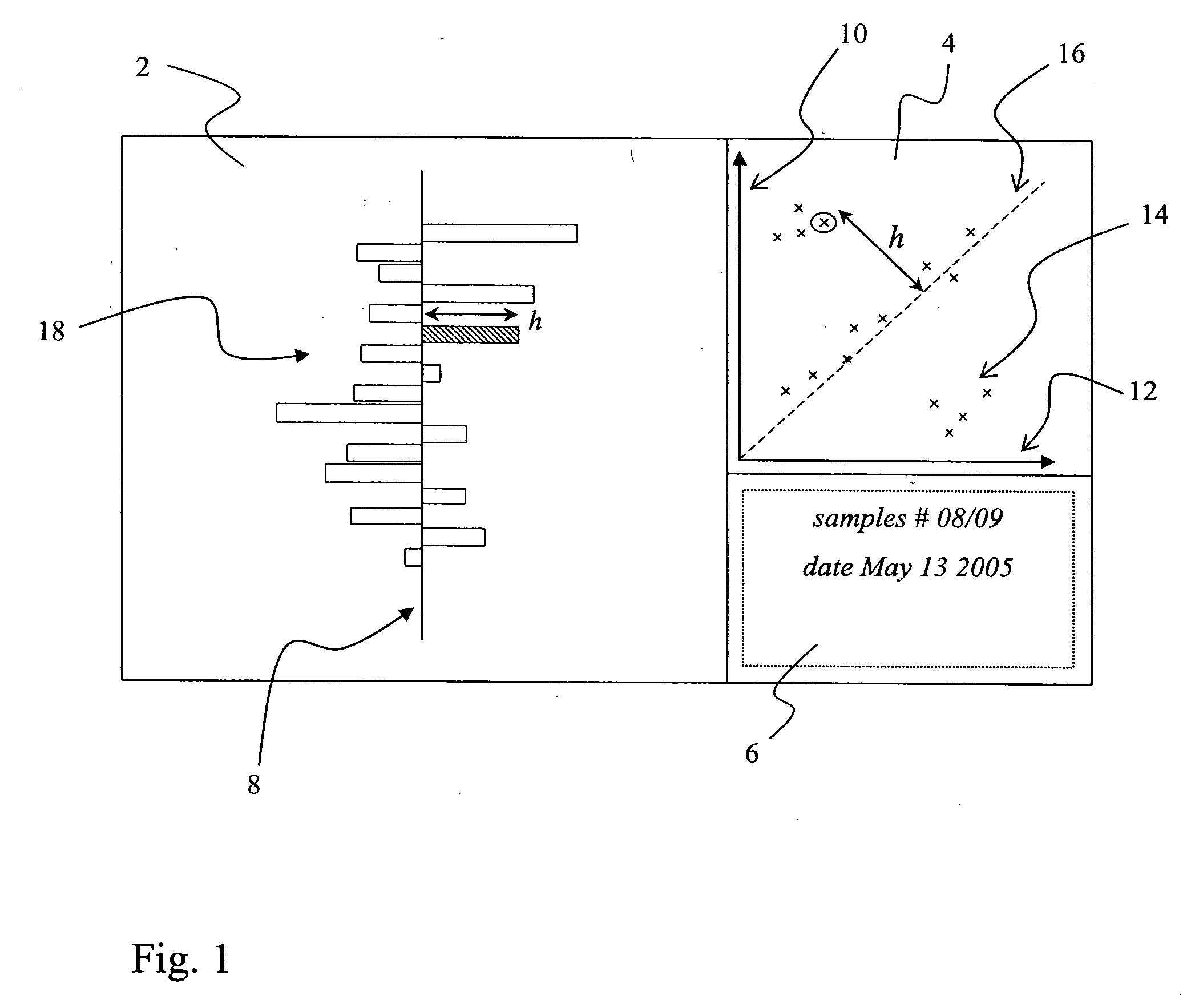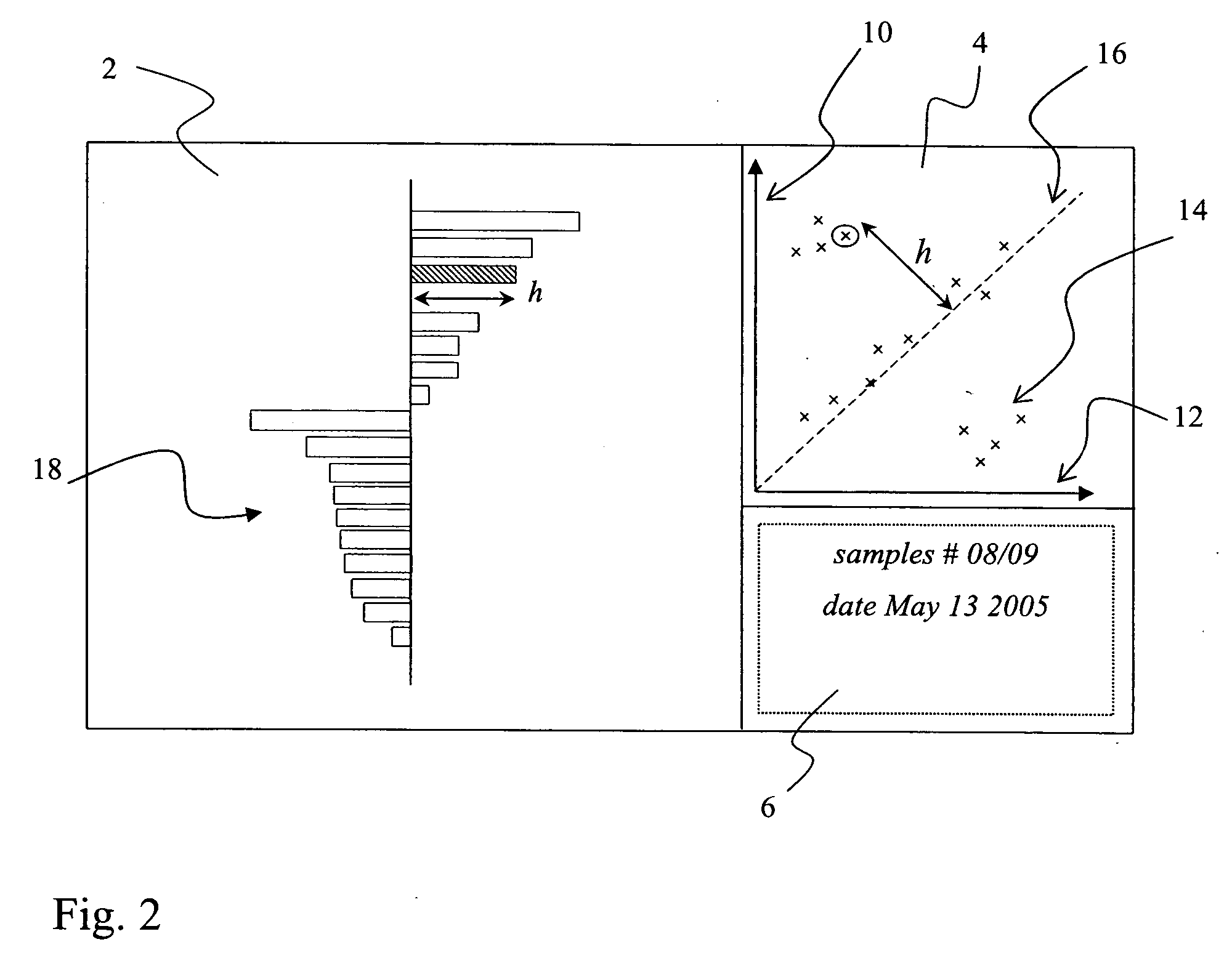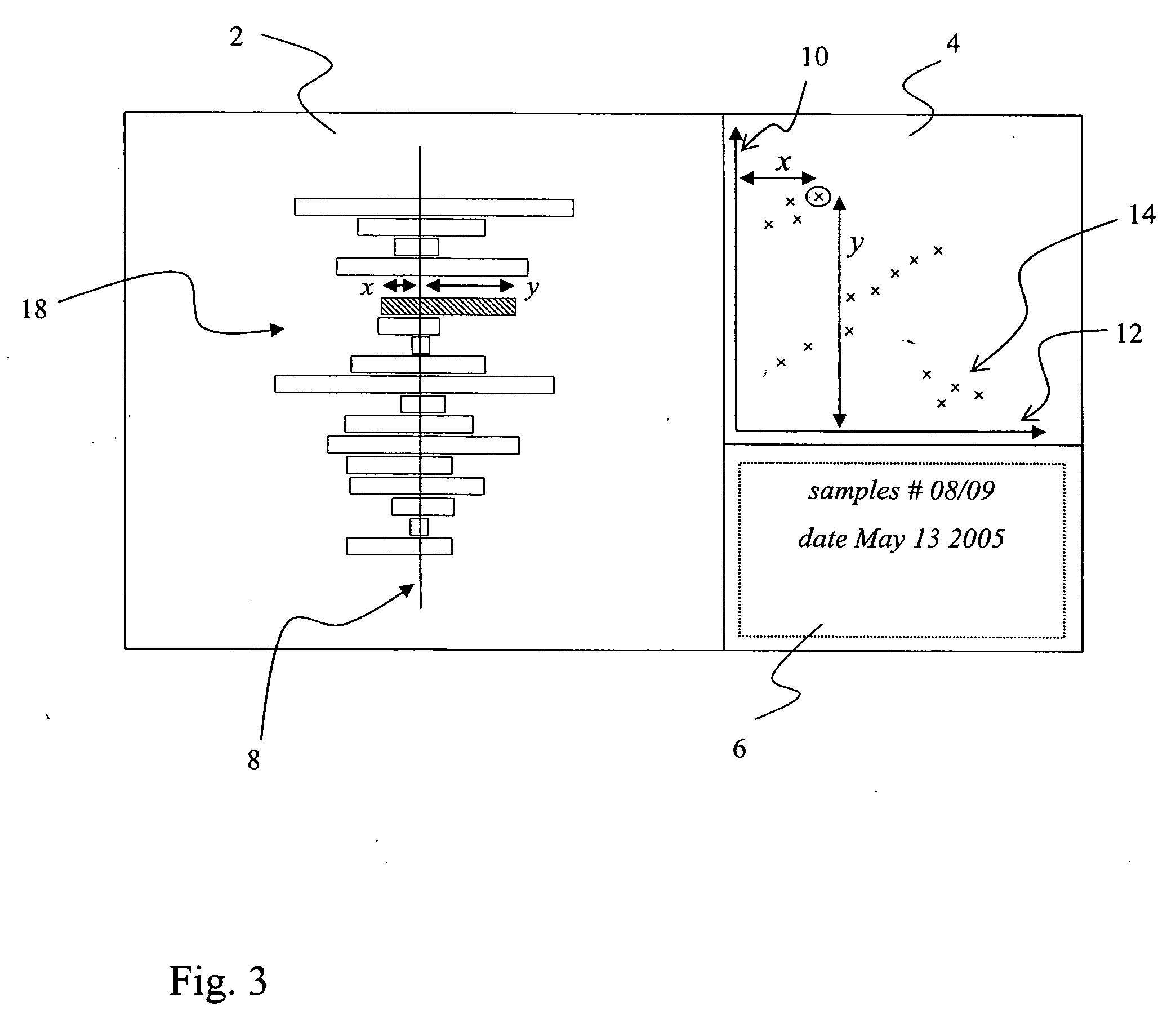Method and device for comparative display of biological data
a biological data and comparative display technology, applied in the field of computer systems for visualizing information and data, can solve the problems of inability to meet the speedy process, no possibility of blending out or hiding data points, visual problems for users, etc., and achieve the effect of improving user control over the displayed data and improving graphical representation
- Summary
- Abstract
- Description
- Claims
- Application Information
AI Technical Summary
Benefits of technology
Problems solved by technology
Method used
Image
Examples
Embodiment Construction
[0149] The computer displays as used in prior art cannot take advantage of split screen data including the use of images from scan results and similar data source. Today, computers and processors allow faster execution of display algorithms. Graphic boards and displays allow faster, more color intensive and larger display formats. The combined effect results in improved work of researchers by delivering an interactive work process.
[0150] Current modern computer displays, for example 16:9 or 16:10 vs. 4:3 as demonstrated by W-XGA or the like, may have wider horizontal dimensions in relation to the vertical axis, thereby being capable to display multiple images at the same time, in a side-by-side manner. Accelerated CPUs, higher memory levels, faster graphics boards and display units, in combination with higher image resolution, can supply the user with multiple images at practically real time, also including more than two data sets at the same time in various kinds of data represent...
PUM
 Login to View More
Login to View More Abstract
Description
Claims
Application Information
 Login to View More
Login to View More - R&D
- Intellectual Property
- Life Sciences
- Materials
- Tech Scout
- Unparalleled Data Quality
- Higher Quality Content
- 60% Fewer Hallucinations
Browse by: Latest US Patents, China's latest patents, Technical Efficacy Thesaurus, Application Domain, Technology Topic, Popular Technical Reports.
© 2025 PatSnap. All rights reserved.Legal|Privacy policy|Modern Slavery Act Transparency Statement|Sitemap|About US| Contact US: help@patsnap.com



